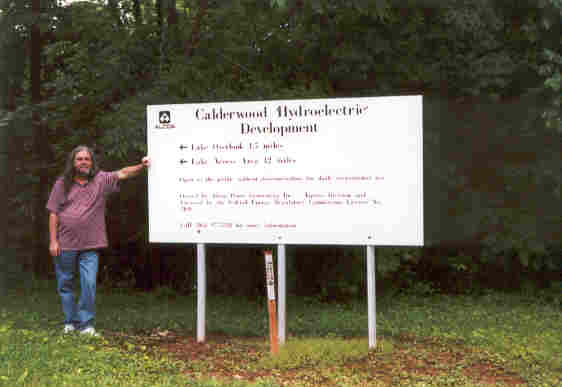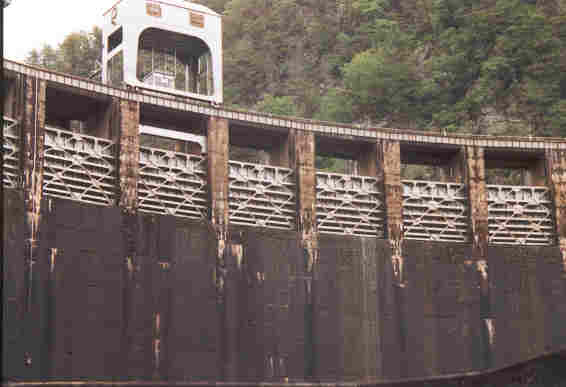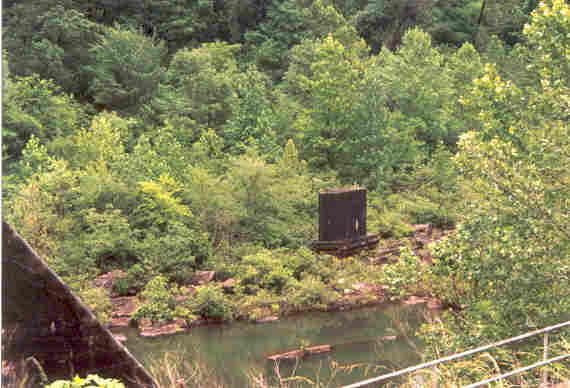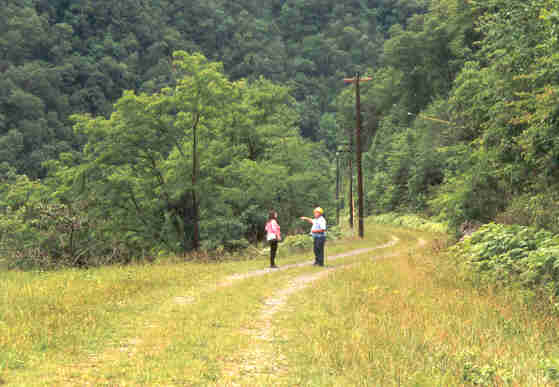
On our first trip, we were very disappointed by the fact that this was the only view we could get of Calderwood Dam. After emailing Mr. Norm Pierson of APGI, he got us access to the base of the dam, although we would have to escorted in (for a very good reason, as it turns out).

A mile and a half from the overlook is the access road down to the river.

This is the Calderwood Service Building...the plaque is slightly misleading as this is not the powerhouse. Here we met Mr. Bill Dixon of APGI, who was going to escort us in.

THIS is the Calderwood Powerhouse, and the reason an escort is required. Notice the narrow passageway between the lefthand garage door and the switch or transformer by the pickup truck in the center of the image? THAT is the access road to the dam! We had to stop in there because some other workers had the road blocked (they are preparing for some upgrades to the turbine/generator assemblies). Bill had to get out and move the other truck...needless to say, we stayed inside our truck!

Finally, a mile upstream from the powerhouse, we get to the dam. Calderwood is a true concrete arch dam, the face of which is almost vertical. When any of the floodgates are open you have a torrent of water free falling to the base of the dam. So as to not erode the base of the dam, they built a massive concrete, concave deflector dish at the base, and a forty foot auxiliary dam to impound a "spillway plunge pool" or "cushion pool". As you can see there is also a wall to protect the access road when the floodgates are open.
The dam is 916 feet long by 230 feet high. The auxiliary dam, just visible in the image above, is 300 feet downstream of the main dam. Also visible is Pat grilling Bill for information, who was very gracious in dealing with our bombardment of questions! One of the things we learned was that Cheoah is not the only movie star of the group: the movie "In Dreams" had a scene shot at Calderwood.

As at Cheoah, there are only two cranes to operate the 24 floodgates. The cranes are usually attached to two floodgates near the center of the dam, and those can be operated remotely. If more than two floodgates are needed, somebody has to move the cranes.

This was a natural location for a dam. This view shows the far side of the dam blending with the natural rockwork.

This is a view of the left side. Notice the stairway working its way towards the top.

This support structure is one of the few remaining artifacts of a railroad built by Alcoa to support construction of the first three dams of the Tapoco Project. Calderwood, the last of the three to be built, flooded most of the abandoned railroad.

This is a view of the access road. Notice the poles bringing power to the dam. They used to bring control signals also, but that is now done via fiber optics. Also notice Jan grilling Bill... we double-teamed the poor guy!
A concrete-lined tunnel, starting about 25 feet under normal full pool (elev. 1087.8) at the left (as viewed above) abutment of the dam,. takes the water 2,150 feet to the powerhouse. There, three turbine/generator assemblies can generate 121.5 megawatts at 8,000 cfs of flow.